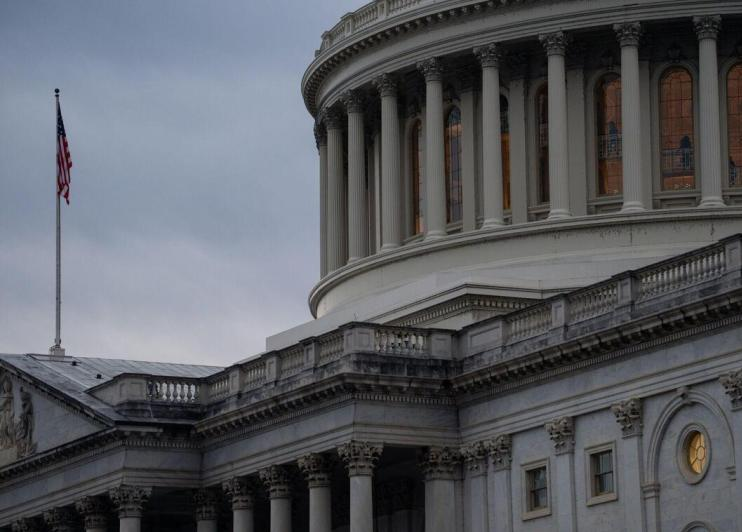
Recently, the U.S. regional banking system has been thrown into turmoil due to two loan fraud incidents. Zions Bank and Western Union Bank disclosed loan frauds of $60 million and $100 million, respectively, directly triggering market panic—the Regional Bank Index plummeted 6.3% in a single day, and the market value of 74 banks evaporated by over $100 billion. This crisis not only exposed the risk management loopholes of regional banks but also reflected the structural contradictions in the global economic recovery. The trigger for this crisis was two related loan fraud cases. At Zions Bank's California branch, loans issued to an affiliated real estate fund saw the fund manager unilaterally lift collateral protection clauses and resell properties for cash, leaving the bank with uncollateralized losses; Western Union Bank, on the other hand, faced losses of about $100 million due to the borrower's failure to provide collateral. These two incidents quickly sparked widespread market doubts about the asset quality of regional banks.
The deep-seated contradiction lies in the business model of regional banks. For a long time, regional banks have been highly dependent on commercial real estate loans and Non Deposit Financial Institutions (NDFI) loans. During the Federal Reserve's interest rate hike cycle, the value of commercial real estate has shrunk by over 20%, and the vacancy rate has risen to historical highs, directly impacting the value of collateral. However, the underwriting standards for NDFI loans vary greatly, and some banks have relaxed due diligence to stimulate loan growth, laying hidden risks. The market is highly vigilant about the exposure of regional banks to NDFI loans, which may become a "risk explosion point" for future financial reporting seasons.
After the crisis broke out, the market's risk aversion sharply increased. The VIX panic index surged 22% to 25.31 in a single day, and although gold prices fell after reaching a historic high, they still remained at a high of $4250 per ounce; The 10-year US Treasury yield fell below 4%, indicating an accelerated flow of funds towards safe assets. The regional bank preferred stock market suffered a heavy blow, with the preferred stock of Chion Bank plummeting 6.36% to $20.38 in a single day, and the preferred stock of Western Union Bank falling 2.87% to $20.83, with further declines expected the next day.
In sharp contrast to regional banks, the preferred stocks of the six major currency center banks have shown stable performance. The preferred stock prices of large institutions such as JPMorgan Chase and Bank of America were almost unaffected, indicating that the market still has confidence in systemically important banks. This differentiation reflects investors' differentiated expectations of the banking system being "big but not collapsing" and "small but fragile".
Faced with a crisis, US regulatory agencies are caught in a dilemma. The US Treasury Secretary attempted to downplay risks, stating that the overall stability of the regional banking system is robust, but market trust continues to decline. The Federal Reserve held a closed door meeting to discuss stablecoin regulation, attempting to stabilize market sentiment through reforms in the cryptocurrency sector, but the short-term effect is limited. Historical experience has shown that the resolution of regional banking crises requires dual intervention from policies and markets, but this crisis involves the structural problem of loan fraud, and simply injecting liquidity is difficult to cure.
If the crisis continues to escalate, it may trigger a triple chain reaction: first, credit tightening, where banks tighten commercial real estate loans and small and medium-sized enterprise credit to cover potential losses; The second is the impact on the job market, with regional banks in the United States laying off over 20000 employees during the 2023 crisis; The third is the transmission of the real economy, where the default rate of commercial real estate increases or pushes up rents, exacerbating inflationary pressures.
However, crises also contain opportunities for transformation. Some regional banks have begun to explore diversified business models, such as strengthening their layout in low-risk areas such as wealth management and green finance. Meanwhile, large banks may expand their market share through mergers and acquisitions, driving up industry concentration. History has shown that every financial turmoil accelerates industry differentiation and drives resources towards more competitive institutions. Investors need to be wary of short-term market fluctuations and focus on the true quality of bank balance sheets; Policy makers need to find the optimal path between stabilizing the market and promoting reforms; Regional banks themselves need to return to the essence of "serving the community and operating steadily" in order to occupy a place in the future financial landscape. This crisis will eventually pass, but there is still a long way to go in building the resilience of the financial system ecosystem.

The US Senate has passed a compromise version of the National Defense Authorization Act for fiscal year 2026 worth $901 billion. President Trump will sign the bill to make it law.
The US Senate has passed a compromise version of the Nation…
The European Commission released a package of measures for …
Venezuela's Vice President and Oil Minister Rodriguez said …
On December 16 local time, the Ministry of Space Science Ex…
Recently, a highly anticipated phone call between the defen…
Right now, the world's major central banks are standing at …